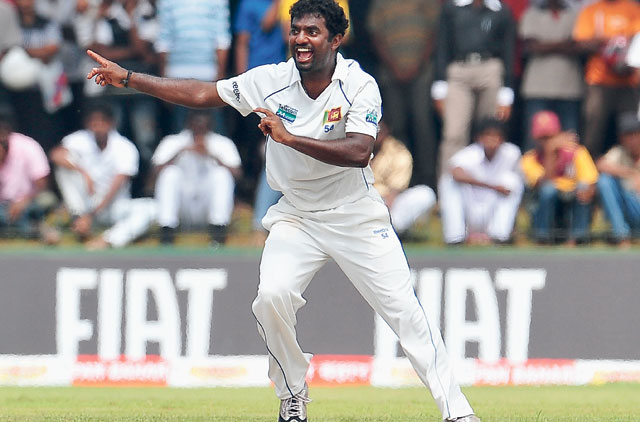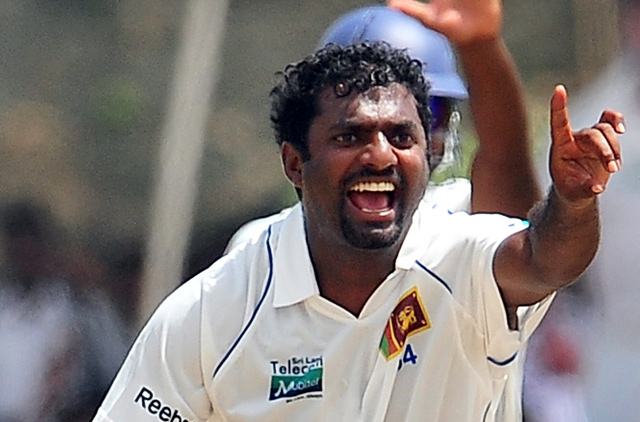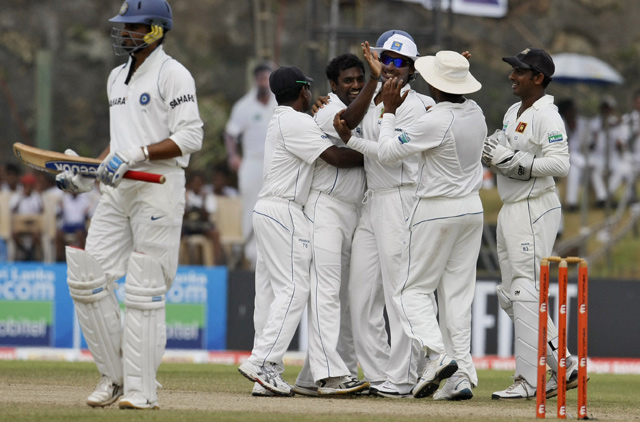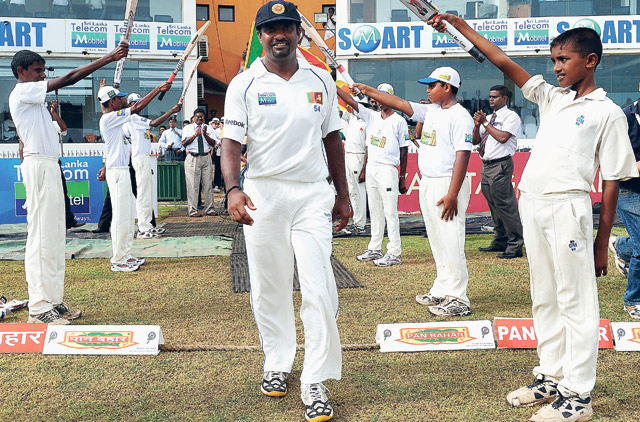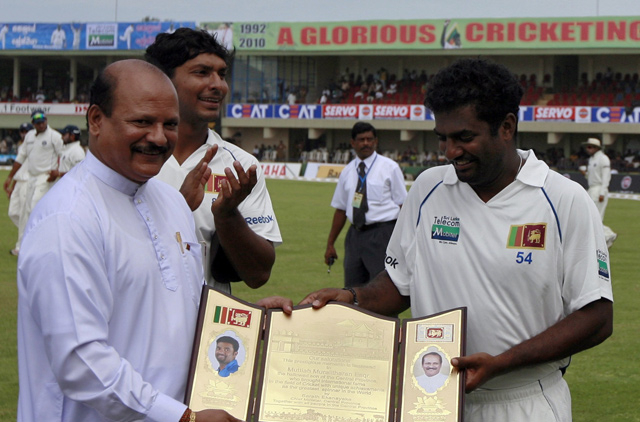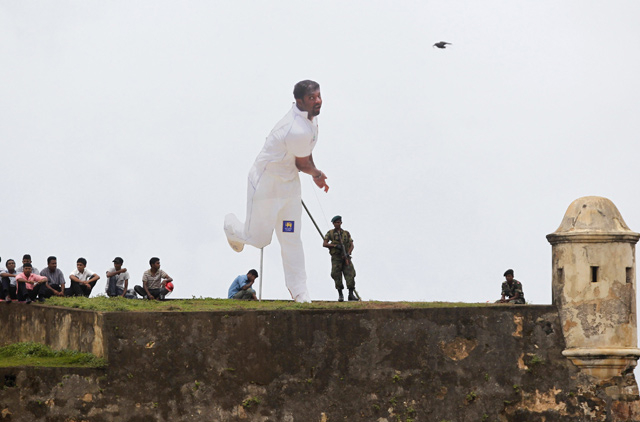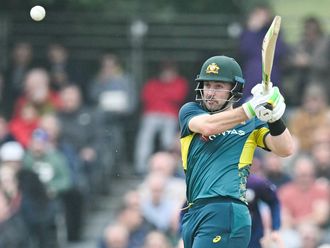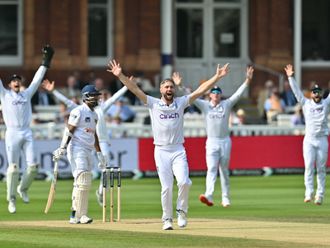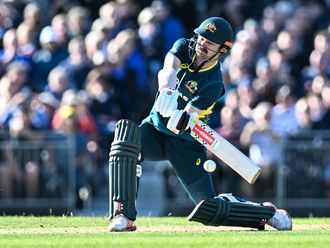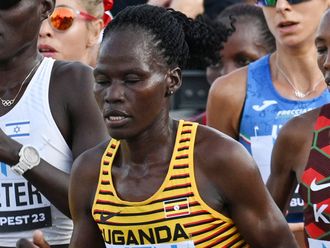
London: Prodigious spin propelled by an abnormally strong wrist and an iron resolve forged in bitter acrimony over his unique action took Muttiah Muralitharan to unprecedented heights in world cricket.
Muralitharan, 38, took his 800th test wicket with his final ball in 133 Tests on Thursday.
With Twenty20 cricket cutting increasingly into the Test programme it is a mark that is unlikely ever to be exceeded.
Muralitharan, son of a confectioner from Kandy and a member of the embattled Tamil minority, believes his best Test figures of 16 for 220 at the Oval in 1999 remain his career highlight.
The one-off Test against an England side who had just beaten South Africa in a series was an unforgettable snapshot of his wondrous powers of flight and spin and the parallel emergence of Sri Lanka as a world force.
An hour before play began on a sunlit final morning, Muralitharan warmed up in the middle under the guidance of his impressive captain Arjuna Ranatunga.
By late afternoon, Ranatunga, Muralitharan and their teammates were celebrating a 10-wicket victory. Only a runout denied Muralitharan all the England second innings wickets.
"It was a mental trial beyond comparison," wrote one of the England openers Steven James recently.
"There was no physical threat, just an umremitting battle against a bowler of supreme accuracy and stamina, with pace and degrees of turn being varied almost imperceptibly."
Muralitharan's triumph followed an oblique but unmistakable message from England coach David Lloyd on the previous evening. "I have my opinions that I have made known to the authorities," Lloyd said.
No-ball furore
Lloyd's remarks were triggered by Muralitharan's standard delivery, which at first glance appears to break the fundamental rule of bowling, namely the obligation to deliver the ball without bending and then straightening the arm.
Australian Darrell Hair no-balled the Sri Lankan seven times for throwing in the 1995 Melbourne Test.
Ten days later, Muralitharan was no-balled repeatedly by Roy Emerson in a one-day international. In January, 1999, Emerson called him again in Adelaide.
Muralitharan, taunted by the Australian crowds whenever he took the ball, announced he would never tour Australia again and seriously contemplated retirement.
He decided instead to fight back with the support of the Sri Lankan board and his career was rescued by the International Cricket Board (ICC).
Extensive tests concluded that Muralitharan's action "created the optical illusion of throwing".
After the controversy continued to rumble, further tests revealed that all contemporary bowlers, and therefore logically all bowlers before them, flexed their elbows to some extent.
A maximum allowance of 15 degrees for both pace and spin bowlers was agreed.
Because of an elbow deformity, Muralitharan's arm remains bent in delivery and does not straighten.
A television experiment showed that even with his arm encased in a brace, Muralitharan could still spin the ball sharply both ways due to his powerful wrist and flexible right shoulder.
Muralitharan made his debut against Australia in 1992, immediately bringing a cutting edge to a side who abounded in attractive, prolific batsmen but struggled to dismiss sides twice.
World Cup winners
He played an essential role in Sri Lanka's exhilarating run to the 1996 one-day World Cup and enjoyed consistent success in both forms of the game before his body finally rebelled against a relentless workload.
Muralitharan's 16 wickets at the 1999 Oval Test gave him 200 wickets in 42 Tests, the same figure as his great contemporary and rival Shane Warne, who went on to become the first man to amass 700 wickets.
The pair were to dominate world cricket for the best part of a decade and, although the extrovert Australian was to become one of the Wisden almanac's five cricketers of the 20th century, Muralitharan's fiercely devoted supporters believe he was the superior bowler.
A convincing case can be mounted for either man but the essential difference is style rather than effect.
Warne was a classicist, the best in a continuing line of Australian leg-spinners stretching from Clarrie Grimmett and Bill O'Reilly and including Richie Benaud.
Muralitharan is a romantic, a man who brought something completely new to his sport by bowling fierce off-spin with his wrist rather than the standard gentler version flicked off the index finger.
He became a complete bowler by adding the ‘doosra', the delivery which spins away from the right-hander, allied to a top-spinner which both bounced and hurried on to the batsman.
The result is a man who can dip the ball wickedly in the air and whip it both ways off the pitch and who at his peak was close to unplayable.
In a country split by sectarian strife, he has also been an exemplary representative of the Tamil people.
"He has taken much from the game of cricket, but he has given back so much to our society," his current captain Kumar Sangakkara said. "More than any other public figure in Sri Lanka, he stands apart."
Factbox: Muttiah Muralitharan
Born in Kandy, Sri Lanka on April 17, 1972.
Muralitharan is cricket's greatest wicket-taker in both test cricket and one-day internationals and one of the most successful bowlers in the game.
The legality of the 38-year-old off-spinner's bowling action had split opinions but was cleared by the International Cricket Council (ICC) in 1996 and again in 1999.
Early years
The eldest of four sons, Muralitharan began cricket as a medium pace bowler before switching to off-spin when he was 14 years-old. He made his test debut aged 20 against Australia on Aug. 28, 1992, claiming three wickets for 141 runs.
A year later he captured his first five-wicket haul in tests against South Africa with figures of 5-104.
Against New Zealand in 1995 his 19 wickets in Sri Lanka's 2-1 series victory proved his match-winning qualities on any surface.
Career milestones
On March, 16, 1997 he became the first Sri Lankan to reach 100 test wickets. In January 1998, he took his first 10-wicket haul against Zimbabwe in the first test.
In August that year, Muralitharan produced career best figures of 16-220 in a one-off test against England.
On March. 16, 2004 he became the fastest and youngest bowler to reach 500 wickets during the second test against Australia in Kandy. Muralitharan had reached the landmark just four days after Australia's Shane Warne had done so on the fifth day of the first test.
Having tussled with Warne for the leading test-wicket taker status in the following years, Muralitharan reclaimed the record in Dec. 3, 2007 against England with his 709th wicket.
On Feb. 5, 2009 he also overtook Pakistan's Wasim Akram as the highest wicket-taker in one-day internationals -- he stands at 515.
On July 22 in his final test match he took the eight wickets needed to reach the 800 mark. Muralitharan removed India's Pragyan Ojha on the fifth afternoon with his family watching in the stands at the Galle Stadium to claim the feat.
Domestic career
Muralitharan has played for two first-class Sri Lankan sides and in English county cricket with Lancashire and Kent, taking 236 wickets in 33 matches.
In 2008, he joined Chennai Super Kings in the Indian Premier League (IPL), finishing runners-up in its inaugural edition.
Do you think Murli is the best spin bowler ever? Or was Shane Warne better?


